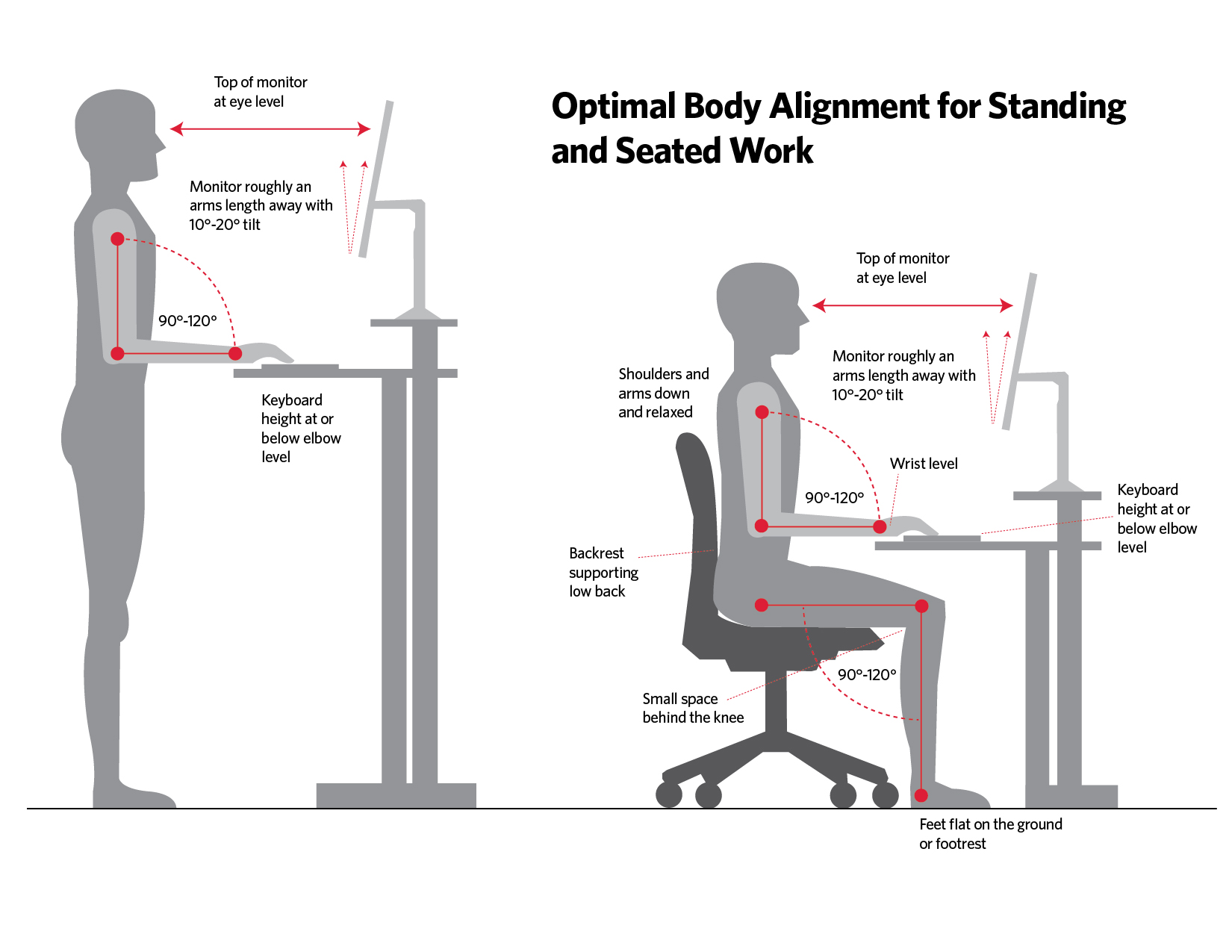The physical environment which includes your tools/equipment and their positioning.
The way we use our equipment.
The habits that we exhibit while working.
This is an overview of basic ergonomic risks in the office and how to avoid them.
The physical environment…
Sitting: Sit back in the chair with the feet firmly on the floor or foot rest. It is best to keep the lower spine in contact with the chair back. The keyboard and mouse should be at or below the elbow level and close to the body. The monitor should be about an arm’s reach away with the top of the monitor at approximately eye level. Additional items that are used frequently should be kept close for easy accessibility.
Standing: Stand close enough to the work area to access the computer without reaching. Allow yourself to shift weight from side to side and/or utilize a footrest or perch to offset your stance. The remaining parameters…keyboard, mouse, and monitor, are essentially the same as when sitting.

Using the keyboard and mouse…
When typing, center the ‘G-H’ keys on the keyboard with the midline of your body and your primary monitor. The wrists should be in a straight and comfortable position with the fingers gently curved. If you cannot access the home row keys without an uncomfortable bend in your wrists, an alternative keyboard may be warranted. Planting the hands on the desk surface or wrist rest should be avoided while the fingers are actively moving and typing.
For mousing, place the palm of the hand on the mouse and let the fingers relax on the buttons. The fingertips will likely extend beyond the mouse buttons. This will feel counter-intuitive to most people but it will align the wrist in a more neutral position and reduce contact pressure on the mouse surface. Let the hands glide by moving the arm slightly, in a motion similar to rubbing something with a cloth. As the fingers lie flat on the buttons, click with the finger pads, not the tips.
In general, take the hands off the keyboard and mouse when not actively typing and relax them in your lap. In other words, don’t stay perched over your work if you don’t need to.
Work habits…
One of the greatest risks associated with prolonged computer use is lack of movement. Any posture, even a good one, becomes untenable with time. If you have multiple tasks to perform and your tasks change often, or if you get interrupted frequently, you might be moving sufficiently. If not, you need to create interruptions for yourself, such as...
- Short task breaks of a couple of minutes are suggested every 20-30 minutes. During that time, take your hands off the computer and get out of the chair.
- Take a short walk or do some stretches.
- If you print documents, schedule several trips to the printer throughout the day.
- Stand when talking on the phone or doing other non-computer tasks.
- Grab a snack or a drink.
Remember, work is dynamic, movement is OK, don’t be too stiff. For example, if I’m typing something I want to sit up comfortably in my chair while doing that, close to my keyboard and mouse. If my phone happens to ring, I could slide away from the keyboard slightly, lean back a bit, change my posture, or I could stand up for a minute. Then when finished move back up to the computer and resume typing.
If you move more regularly, you will slouch less, mitigate aches and pains aggravated by inaction, and encourage better circulation for your body. (last update May 2021)